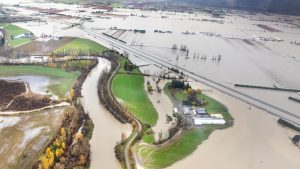The federal government has announced eight Ontario municipal water infrastructure projects valued in the hundreds of millions of dollars that are intended to deal with storm surges and mitigate against flooding, with more to come.
Municipalities contacted by the Daily Commercial News said in most cases they were ready to go with designs and programs prepared and in some instances projects already underway. In York Region the tender for a sewage main twinning project has already gone out and it was hoped construction could start as early as June.
However, in Toronto, design for the specified project is in its early stages and won’t be complete for two years, though construction might begin late in 2020, said Lou Di Gironimo, general manager for Toronto Water.
Giovanni Cautillo, executive director of the Ontario Sewer and Watermain Construction Association as well as the Greater Toronto Sewer and Watermain Contractors Association, welcomed the funding and said his member contractors have the capacity and expertise to handle any work thrown their way, but criticized the federal initiative as late to the party.
“From our standpoint, we won’t look a gift horse in the mouth,” said Cautillo. “It’s been a long time coming.
“All levels of government should have been involved in this long before the insurance claims started to come in. Stormwater has been neglected for the last 50 years. I am glad you have come to the party, but you’ve come too late.”
The funding comes from a federal climate change stream, the Disaster Mitigation and Adaptation Fund (DMAF), a national program that will spend $2 billion to “support large-scale infrastructure projects to help communities better manage the risk of disasters triggered by natural hazards,” according to information supplied by the federal Ministry of Infrastructure and Communities. The projects are intended to support the federal government’s obligations laid out in the Pan-Canadian Framework on Climate Growth and Climate Change.
Announcements will continue into April, the ministry said.
Municipalities besides York and Toronto that received funding in announcements made March 26 to 28 are Markham, Vaughan, Chatham-Kent, London, Sudbury and Sarnia.
The total spend on the Markham Flood Control Project, designed to protect such vulnerable areas as the Don Mills Employment Lands and the West Thornhill Community from flooding, is just over $121 million. The federal contribution is $48.64 million and the city will spend $72.96 million. The 30-year flood control program is already well underway, indicated a statement.
DMAF funding in Vaughan topping $41 million from the two sources will support the city’s Stormwater Retrofit program and protect 35,000 residents against flooding, said a city statement. The funding will help offset existing municipal commitments to the program, said Mayor Maurizio Bevilacqua in the statement.
The combined spending on the York Durham Sewage System Forcemain Twinning Project adds up to approximately $120 million and enables the region to twin the existing 35-year-old main sewage conduit to minimize potential spills, particularly during storms.
Mike Rabeau, director of capital planning and delivery in York’s Environmental Services department, commented about the funding, “It is very welcome and we are happy to receive it. We need to be ready with a resilient system.”
In Sudbury, federal funding of $8 million will contribute to extending the lifespan of the Maley Dam 100 years, performing other upgrades and developing a new stormwater management facility. The projects will enhance drainage to protect the downtown Sudbury core, the Flour Mill neighbourhood and upstream areas.
Construction drawings and a tender package for the Maley Dam project are near completion and the city expects to initiate the pre-qualification process in April, followed by an RFP. Construction is anticipated to get underway in the second half of this year.
The projects are projected to protect over 18,000 residents in Greater Sudbury from flooding.
In contrast, the mid-town Toronto project, valued at just under $120 million and targeted to upgrade basement flooding protection through the construction of a storm sewer that will service an area of over 75 hectares, was touted as protecting 2,400 residents from floods, a point raised by Cautillo.
“They are thinking it is fantastic because it covers a huge area, 75 hectares, but only covers 2,400 residents,” he said. “That is a far cry from how many are protected in Vaughan.
“Where is the value? When I look at it per capita, it’s ridiculous. We need the expenditure to be the biggest bang for the buck.”
Emailed comments from Di Gironimo argued the benefits go beyond the immediate protection of 2,400 residents. He stated, “In addition to protecting basements, this project will also provide water quality treatment to 75.8 hectares of the city…This project represents a major investment in resilience which will benefit current and future residents of the area.”
Detailed design of a tank and tunnel is scheduled to be complete in 2021. Detailed design of local sewer upgrades, which are less complex, will proceed in parallel to allow construction to start in 2020, noted Di Gironimo.
The manager said the City of Toronto’s Basement Flooding Protection Program was a key recommendation of the Wet Weather Flow Management Master Plan, approved by Toronto council in 2003, and it’s “one of the most extensive and robust programs of its kind being implemented by any municipality in North America.”











Recent Comments
comments for this post are closed